Bamboo is huge. It grows like mad, faster than any plant on earth, and you can make almost anything with it. The demand for bamboo has never been greater. And we think that’s a good thing. Because in terms of sustainability, bamboo outstrips all the competition. It grows faster, renews more quickly, produces more oxygen and captures more carbon. So who wouldn’t want to get in on this trend and start growing bamboo for profit?
Essentially, you can make money by growing bamboo in three different ways. The most ambitious model might be to farm a bamboo plantation and sell the raw material to bamboo processors and manufacturers who could turn it into furniture, textiles, and building materials. A more practical alternative might be to grow a wider variety of bamboo on a small plot of land and operate something like a grassroots nursery. In conjunction with either of those models, you could also develop your own bamboo product, creating something more valuable than simply the bamboo itself.
In the following article, we’ll look at the viability of these business models. We’ll consider the pros and cons, examine some of what goes into growing bamboo for profit, and hopefully help you decide whether such a plan might be right for you.
NOTE: This article first appeared in November 2020, most recently updated in June 2024.

Why make a business out of bamboo
Growing bamboo for profit sounds like a dream come true. Just beware of things that sound too good to be true. The idea of tilling a piece of land in the countryside, and sustaining yourself with a perpetual harvest of highly-sought-after bamboo does have an idyllic charm, but the reality of farming bamboo for a living might not be so simple.
If you’re looking for a get-rich-quick scheme, then you’ve come to the wrong place. That’s not what this is about. But if you are madly in love with bamboo and you’re thinking about how to support yourself by pursuing your passion, then you may be on the right track.
I’ve been in the bamboo business since 2006, and for me it was never about getting rich. But I know I’ve met a lot of fantastic people and made a great many people happy with bamboo. And frankly, that’s the kind of enrichment I find far more fulfilling. But if you have a high-quality product that’s useful and in high demand, there’s no reason you can’t make a living with it.
I’ve written numerous articles about the benefits of bamboo in terms of sustainability and versatility, and I’m convinced that it’s a superior resource for innumerable reasons. In terms of profitability, bamboo is not the worst choice. But that shouldn’t be the single most important criterion when you choose to grow bamboo.
Still, bamboo grows quickly, and currently the demand is tremendous. So if you know a little bit about farming and a lot about bamboo, you should be able to produce a reasonable crop. And if you’re also knowledgable about business and marketing, there’s no reason you can’t put together a nice little enterprise and bring home an acceptable profit.
3 Ways to make money by growing bamboo
Bamboo, as I’ve said many times and in many ways, is an amazing plant. There are roughly 1,500 different varieties of bamboo, and hundreds if not thousands of practical and commercial uses for the plant. But there are basically three directions to choose from if you want to grow bamboo for profit.
- Bamboo nursery: Pandemic or no pandemic, people love gardening. Growing and propagating an assortment of ornamental bamboo species and selling live, potted plants may be the easiest way to make money growing bamboo.
- Bamboo farm: Some bamboo nurseries refer to themselves as farms, but here we’re talking about something more like a bamboo plantation. With the right kind of timber bamboo, you can produce a commercial crop and sell the poles like lumber, the shoots for food, or the biomass for fuel.
- Product development: If you can create your own products from bamboo, a line of handmade furniture or garden art, for example, you will add value to your bamboo and distinguish yourself from other bamboo producers.
It’s always a good idea to find a business niche and zero in on it. But it’s also possible to combine these three models, growing bamboo and selling live plants, harvested poles and finished products. Just be careful not to over-diversify.
NOTE: If you’re interested in earning carbon credits on your bamboo plantation, you can contact us to schedule a consultation about this exciting and volatile industry.

Selling ornamental bamboo plants
With so many species and cultivars to choose from, bamboo makes a fabulous niche for a specialty nursery. Bamboo just needs dirt, sun and water to grow. And most bamboo grows quickly, so it’s fairly easy to propagate.
There’s a fairly robust demand for live bamboo in most parts of the country. People typically pay anywhere from $30 to as much as a few hundred dollars for a potted bamboo plant. So there’s a potential to make some money here, especially if you have some acreage to grow on. And there are a variety of ways to turn this into a profitable business model.
If you want to operate a nursery, you’ll need some degree of expertise. You’ll have to know which species perform the best in your climate, and in the surrounding areas. You’ll need to learn to distinguish between species. And you’ll have to know how to care for the plants and to identify problems.
One advantage of growing and selling bamboo plants is that it’s something you can do at any scale. You might just have two or three species of bamboo that you propagate in your backyard. You can sell your plants on Craigslist, at flea markets, or at garage sales. Add some succulent arrangements to the mix, and boom! You’re in business.
Or you might have a few acres where you can grow species after species, row after, of potted bamboo plants. Make sure your zoning and business permits are in order, and you could have yourself a respectable nursery. Open up to the public with regular business hours, or offer service and sales by appointment only.
Then you also have the options of operating a retail nursery, selling to the public, or a wholesale nursery, supplying bamboo to general garden stores in your local area. If you’re less comfortable working in customer service and dealing directly with the public, a wholesale outfit could make more sense. Also, as a wholesaler, you could get by with just a handful of the most popular bamboo species that general nurseries would be interested in.
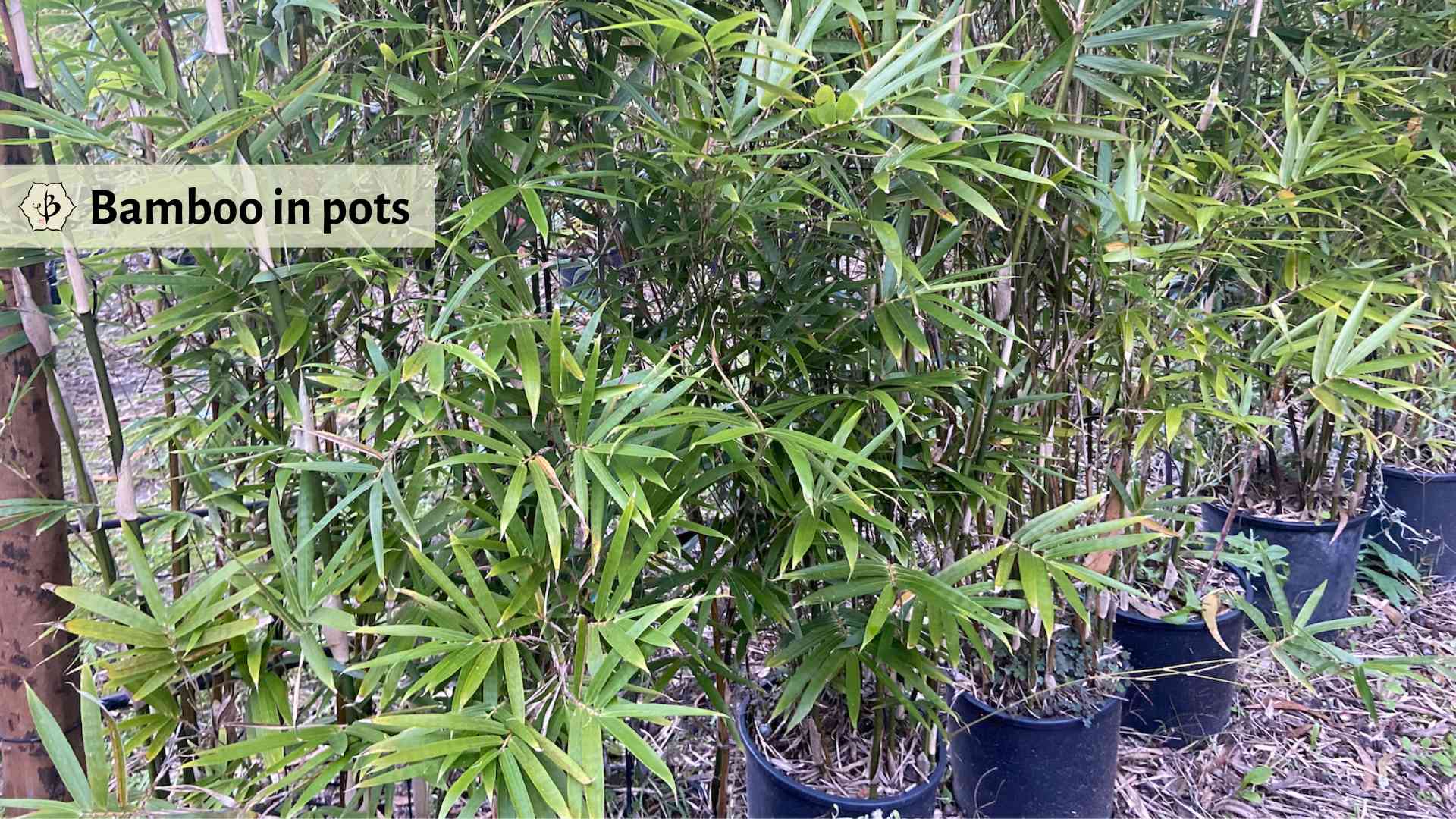
More bamboo services for added profit
If this works out, you can continue to scale up, providing additional services. A lot of homeowners find themselves needing help with bamboo removal. If you know what you’re doing, you can extract an unwanted bamboo plant from someone’s garden, keep it alive, and then resell for an additional profit at your own nursery.
Bamboo installation is another popular service. Especially for commercial clients and individuals who want to purchase an already mature grove of timber bamboo, the installation component is key.
If you live in a more remote, rural area, you may find it necessary to augment your income by selling to a wider audience online. Shipping live plants can be tricky, but it can be done right. There are bamboo collectors living all across the country, and most of them probably don’t have a bamboo specialty nursery in their neighborhood. So if you have a good assortment of exotic species, a well-designed website, and an effective shipping department, this is an excellent way to make your bamboo business more profitable.
This will also require an even greater knowledge of bamboo, in order to help customers from all different climate zones to select the right species for their conditions.
Bamboo propagation for nurseries
Another amazing property of bamboo is the ease with which it propagates. Running bamboos, in particular, have long, vigorous rhizomes, which are not difficult to separate and transplant. Within a year, the newly potted specimens are well-established enough to resell. And within two or three years, they are large enough to fill out a good-sized pot.
Check out our in-depth article on How to Propagate Bamboo.
But if you want a profitable nursery, you’ll need to propagate more than just the ordinary runners, like Phyllostachys aurea, and other invasive varieties. These vigorous species will be fine for bamboo novices, but the real connoisseurs will need something more interesting. And many customers will specifically ask for clumping bamboo.
Clumping bamboos will be a bit more challenging to propagate, but with a healthy grove and a good selection of well-established plants, it’s pretty easy to keep propagating on a regular basis, every spring at least. Even if you don’t get a 100% success rate, it poses little risk to the mother plants. In fact, taking root cuttings is actually likely to stimulate even more growth.
And ultimately, because clumpers are generally a little harder to propagate, and slower to spread, they tend to fetch a higher price. The fear of invasive bamboo taking over entire gardens also makes the clumping bamboo considerably more popular. An exotic clumping bamboo like Thyrsocalamus liang striata, for example, can sell for $500 in a 3-gallon pot.
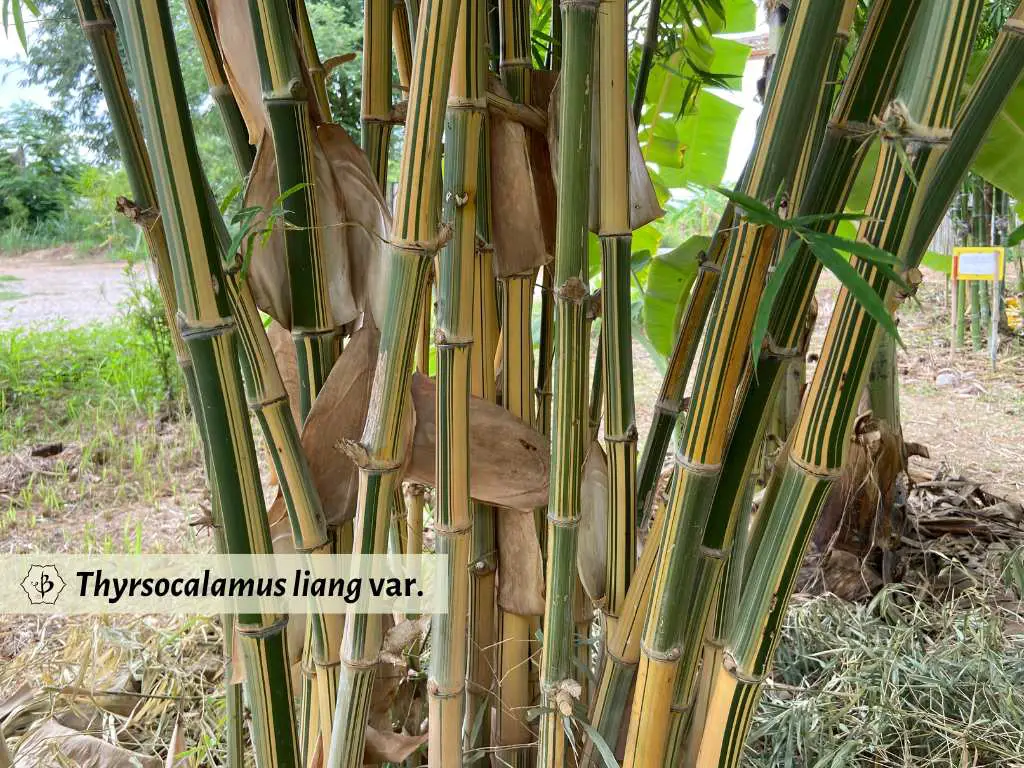
Bamboo species for gardens
If you want to grow bamboo for a profit, and not just a little hobby on the weekends in your driveway, then you need to come up with a nice selection of bamboo species. The first step will be knowing which types of bamboo grow the best in your climate. A bamboo nursery in Florida will look much different from a bamboo nursery in Oregon.
Check out our articles on Choosing the best bamboo for your garden, Growing bamboo in zones 7 and 8, and Growing bamboo in Canada.
Once you’ve got a handle on your climate zone, you’ll want to put together a diverse assortment of bamboo species. That means a good mix of both runners and clumpers. And you’ll also want a nice variety of sizes, including dwarf bamboos, medium-sized bamboos, and timber bamboos. Again, a certain level of expertise will be necessary to manage a diverse inventory of bamboo. Customers will want to know which varieties are best suited as privacy hedges, as ground covers, or for building material. And they’ll need to know which bamboos are the most cold-hardy and which will perform best in the shade.

Farming bamboo and selling the poles
Lately, there’s been a lot of interest in farming bamboo, not for nursery stock, but as a cash crop. When you see the selection of bamboo products available today — from furniture to housewares to textiles — you know those manufacturers must be sourcing their bamboo from somewhere. Why not buy it from you?
Pros and cons of farming bamboo for profit
The vast majority of raw bamboo material has long been coming from China and Southeast Asia, but how nice would it be to get products made with American-grown bamboo? For those looking for a smaller carbon footprint, domestic bamboo would present a great advantage. And with looming tariff wars and other matters of global uncertainty, the benefits of using local bamboo are manifold.
But as anyone knows, competing with Chinese producers is not so easy. And when you’re in the business of producing bamboo, a plant largely indigenous to China and South Asia, the competition is bound to be fierce.
Still, as a crop that’s naturally resistant to pests and diseases, and not terribly demanding on the soil, many farmers are giving bamboo a chance. Once the plants are established, they can be harvested regularly without the need for replanting. Furthermore, they require little or nothing in the way of pesticides and herbicides. They don’t even need a tropical, Indonesian climate. Any place where they farm corn should also be suitable for bamboo.
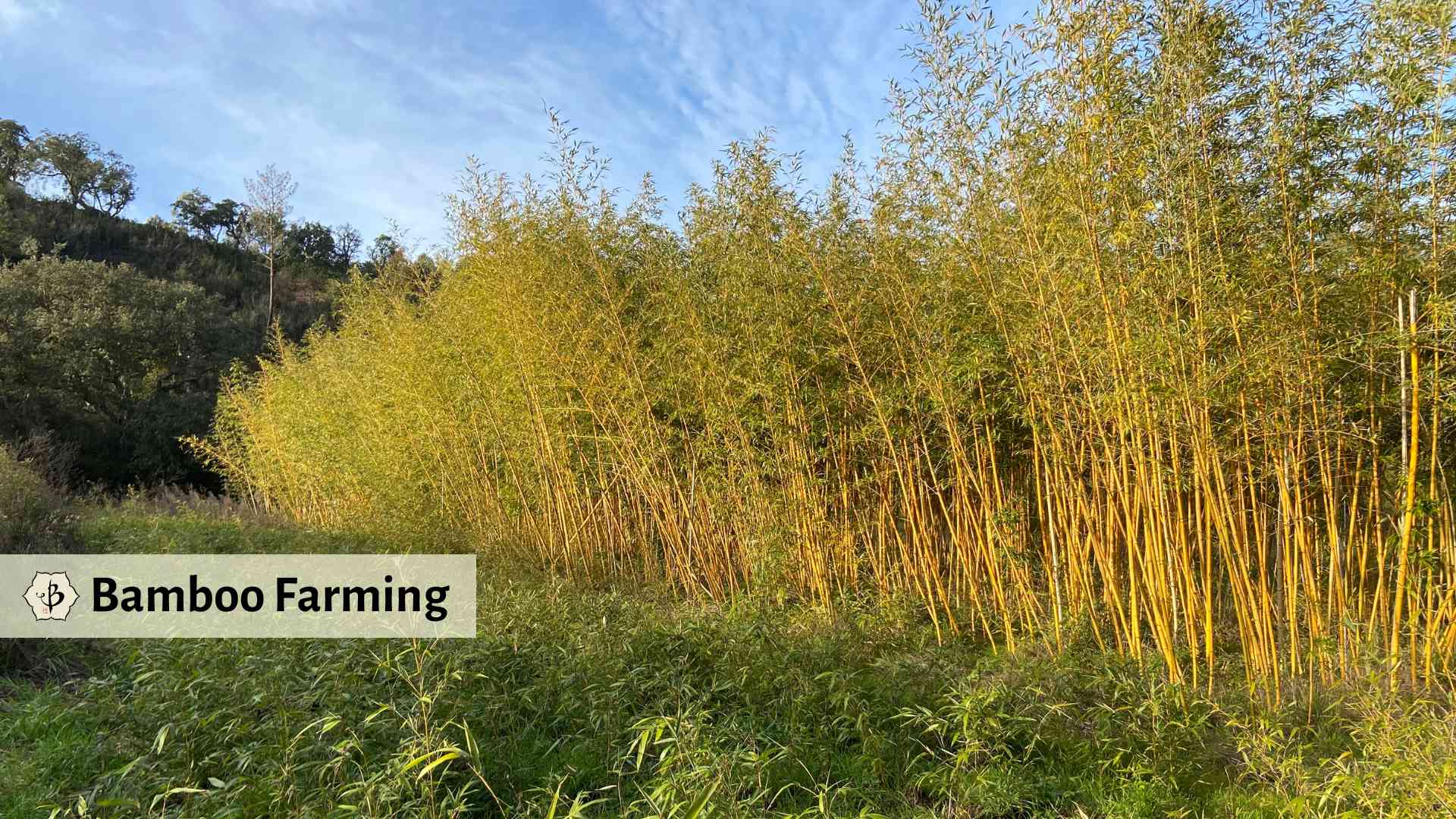
Marketing bamboo for profit
The greatest challenge at this point is finding a domestic market for raw bamboo. For now, there’s really no bamboo processing industry in the United States. If you want to mill bamboo into paper or convert it into yarns and textiles, you’ll need to build a factory or ship it to China.
At the moment, the domestic demand for raw bamboo consists primarily of small craftspeople and cottage industry construction. Bamboo is an amazing material to work with, strong, lightweight and flexible, but most projects require only a dozen poles or so. Larger projects are less common in North America, as it’s difficult or impossible to build with plain bamboo in a way that is up to code. Occasionally you’ll find someone with a DIY tiki bar or gazebo project, but those are fairly rare.
If you have a serious quantity of good-sized bamboo poles, you can probably sell them for anywhere from $1 to $20 a piece, depending on the length and diameter, somewhere like Craigslist. You might also find some hardware stores, craft stores and garden supply stores interested in buying them wholesale. They can be useful as garden stakes, curtain rods, fishing poles, and in all manner of light construction.
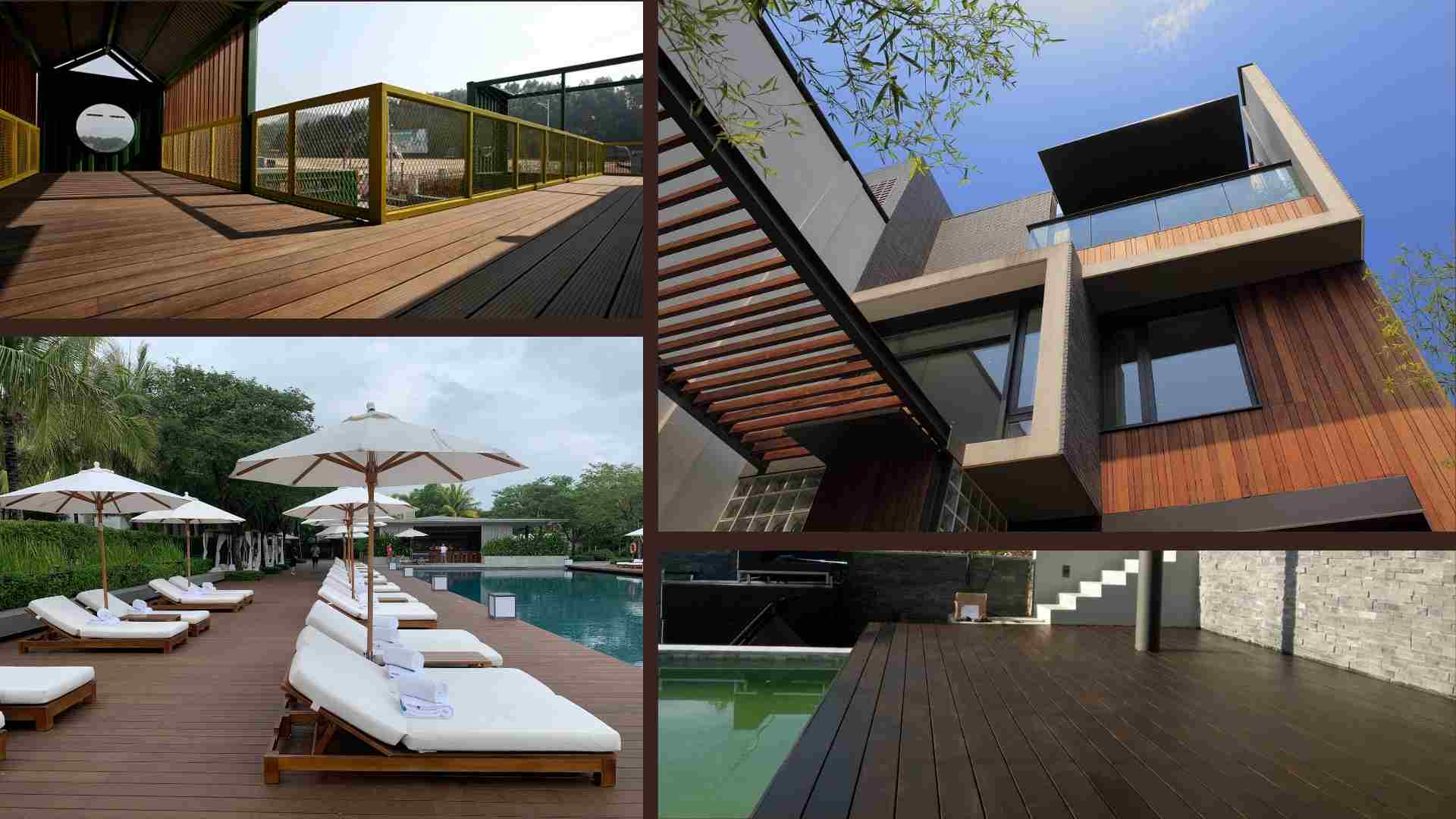
Bamboo construction is expanding in the US, but this is almost entirely with laminated and otherwise engineered bamboo building systems from companies like Dasso and BamCore. But construction companies like these are using either Moso bamboo from China or tropical bamboo like Guadua and Asper from South America or Southeast Asia. And they aren’t just building with poles.
A new industry is emerging for biomass fuel and ethanol, and that’s another potential market for raw bamboo. As of 2021, there are more than 20 ethanol plants in the US in operation or under construction. Many of them are capable of processing wood chips, including bamboo, into ethyl alcohol which can provide a clean fuel source. Check out our in-depth article on Bamboo Ethanol: Fueling the future.
It looks as if there will be more bamboo processing facilities coming online in the next five years, to produce things like biochar and pulp for paper. This could be a game changer for Americans who want to grow bamboo for profit. However, it will still be necessary to have your farm in close proximity to the factories, because shipping truckloads of raw bamboo poles over great distances can be costly and cumbersome.
Ultimately, you’ll have to get pretty creative, or be pretty well connected, in order to find a market for plantation quantities of bamboo in the US. Otherwise, you should consider designing and manufacturing bamboo products of your own. (See below.)
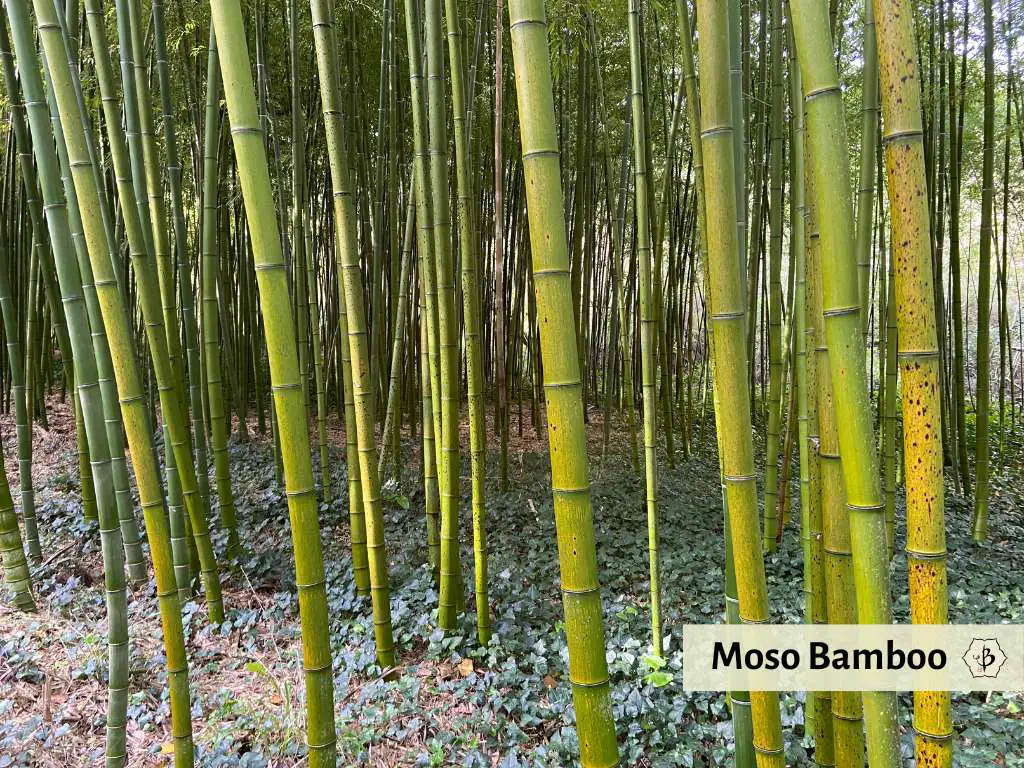
Bamboo species for poles and construction
Assuming you have a market for your bamboo, you’ll need to be sure to plant the right variety to make it worthwhile. Finding the right species or two for your climate and soil type is critical if you’re growing bamboo for profit. Chances are you’ll want a timber variety that grows tall and wide, with thick culm walls to make them suitable for building and construction.
For a temperate bamboo that you can farm in a variety of climates, your best bet will be a larger member of the genus Phyllostachys. Check out our in-depth article on the Best bamboos for building and construction.
Phyllostachys edulis: Also known as Moso bamboo, this is probably the most widely grown species in China, used for making bamboo clothing, flooring and kitchen wares. Moso can grow in zones 6-9, but really only thrives in zones 7-8, in the American Southeast, for example. For some reason, it’s a more difficult plant to get established.
Phyllostachys bambusoides: Also called Madake or Japanese Timber Bamboo, this species is somewhat more hardy, and grows better across a wider range of climates. It does best in zones 7 and 8 where mature culms can get 60-70 feet tall, but it also does pretty well further north and on the West Coast. The unusually thick culm walls make this an ideal species of building.
Phyllostachys nigra ‘Henon’: P. nigra, or Black Bamboo, is an extremely popular variety for its slender black poles. But the cultivar known as Henon, or sometimes Giant Gray, is a timber variety with great stature and beautiful greenish-gray culms. It’s also cold hardy and relatively easy to grow.
If you live far enough south, in Florida or Alabama, for example, you can try growing some giant tropical bamboo.
Bambusa balcooa: A great choice in warmer climates, the culms are known for their thick walls. Poles can get 60-80 feet tall and 5-6 inches in diameter. Cold hardy to about 25º F, it can grow pretty well in climates like Southern California and Florida.
Dendrocalamus asper: The species of choice in Southeast Asia and Indonesia, this giant timber bamboo has exceptionally thick culm walls. Poles get 50-80 feet tall and 4-6 inches thick, and grow in tight clumps. Sensitive to frost, the plant will show damage if temperatures drop below 30º F. Asper is now widespread among commercial farms in Africa and South America.
Guadua angustifolia: Native to the highlands of Colombia and the Amazon basin, this neo-tropical clumper is the strongest bamboo indigenous to the Western Hemisphere, but it’s not likely to do well anywhere north of Central America.
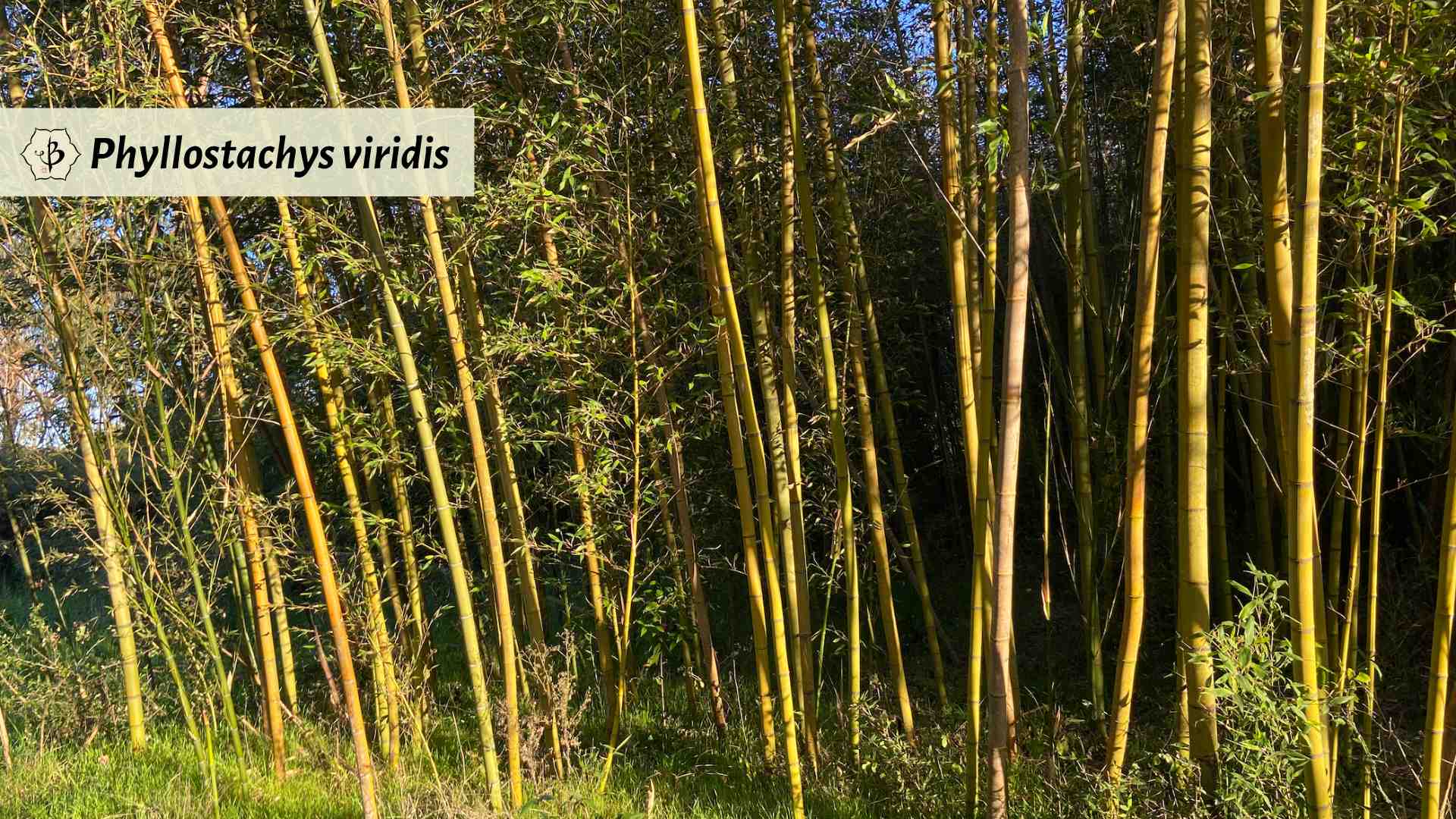
Bamboo propagation for plantations
Propagating bamboo for a small to medium-sized nursery is one thing, but if you want to cover some acreage, it would take you years of cuttings to fill your farm. On the other hand, once the fields have been planted, you won’t really need to do any more propagating. As a grass, bamboo thrives with regular pruning and harvesting.
Most varieties of bamboo will take about five or six years to achieve full maturity. At this point, the roots are established, nearly indestructible, and the new shoots will produce full-size culms. In the first few years, the plant puts up smaller culms, both shorter and narrower in diameter. Eventually, these small stalks should be removed to make room for the big ones. Small culms can be discarded, or used as garden stakes in the veggie patch, or used for other light crafts.
To launch a bamboo farm then, you will probably need to find a good supplier of bamboo starts. Whether grown from seed, from cuttings, or from tissue, you’ll need trays and trays of young plants. OnlyMoso, based in Central Florida, is one of the few growers in the US currently providing start-up stock for aspiring bamboo farms. However, their plants typically come with certain contractual obligations which some growers may consider onerous.
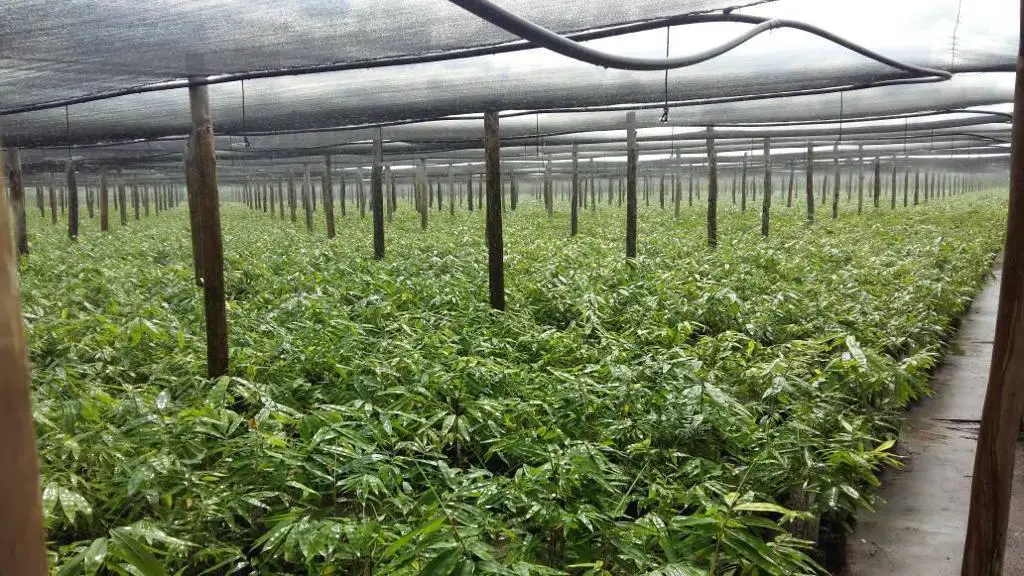
Bamboo farming resources
You can check out the books from Daphne Lewis if you’re looking for more information about farming bamboo. She’s written many books on the topic, including Farming Bamboo and Bamboo on the Farm: Increase Your Income. Both books are available on Amazon and they are both great reference guides for the beginning farmer.
Add value and profit by creating something with your bamboo
To get the biggest bang from your bamboo, you may want to create your own bamboo product. If you can come up with a fantastic idea, and bring it to fruition, this will add the most value and turn your bamboo into profits. Whether your idea is simple or elaborate, bamboo products are all over the place right now. Yours only needs to be unique, and preferably useful.
The idea here is to come up with something you can make yourself, or at least have made locally. If you want to produce your own bamboo clothing, for example, you won’t really be able to do that with your own homegrown bamboo. The biomass will need to be converted into yarns first, and the only factories doing that are in China.
You can, however, make some furniture, fountains, garden art, or any number of other creative bamboo articles. Bamboo charcoal is another hot item right now, and that’s something an individual can process on their own, with a little ingenuity. Similarly, you can distill bamboo to extract ethanol for fuel or for libations.
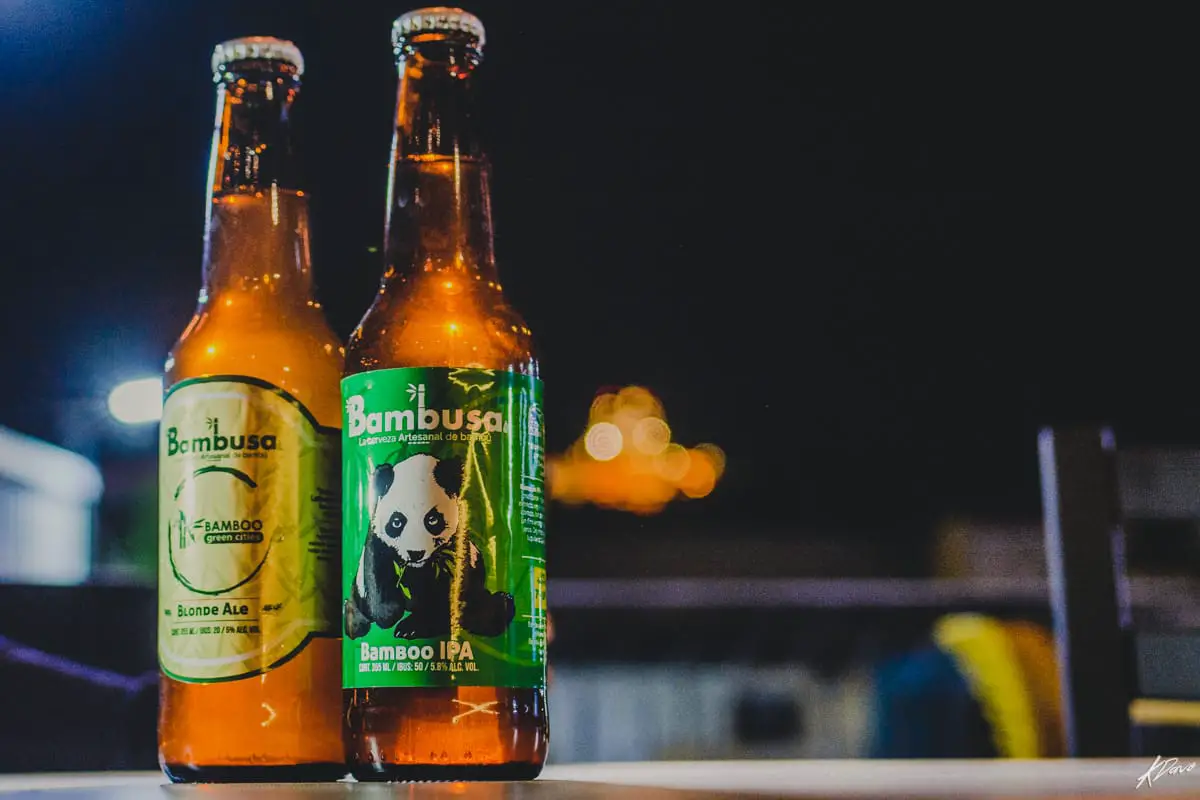
Conclusions
At the end of the day, growing bamboo for profit won’t be as easy as picking silver dollars off a tree. But with a little imagination, you can find a way to earn a living by growing a plant that’s remarkably useful, wonderfully sustainable, and also pretty to look at.
If you’ve made it through this whole article, and you still want to try growing bamboo for profit, then there’s no better time to get started than now. Check out some of the bamboo farming books we mentioned above, and speak to some other farmers in your area. You can also contact Bambu Batu to schedule a consultation. We have a wealth of information on the subject and hundreds of contacts in the industry.
Further reading
To learn more about the many varieties of bamboo, their many uses, and how to select the best variety, take a look at these other articles.
- Investing in Bamboo: Yield of greens
- Best bamboos for building and construction
- Several ways to treat your bamboo for building
- Temperate timber bamboo for cold climates
- 10 Best bamboos for your garden
- The complete guide to growing bamboo
- What’s so great about bamboo?
FEATURE IMAGE: Commercial bamboo farming at Bambu Parque in Portugal. Photo by Fred Hornaday.


























Looking to profit from a bamboo farm
Good luck, Valerie! The possibilities are tremendous.
I’d love to meet with Fred to see if there are ways to work together.
Feel free to send me an email and we can chat.
Bamboo can reverse climate change
I have about 4 acre’s of bamboo. Once it starts spreading you can’t kill it. It has spread in every direction. The underground running roots come under fences and anywhere it can get Sunshine. I have always regarded it as a pest plant that grows so fast and spread so fast, it grows so tall 80 feet tall or more. After this about bamboo I may try to made a small business of selling it.
You can dig a trench around the perimeter in order to contain it. But if you can’t moderate it, then why not monetize it?!
This was a great read. Always loved bamboo. I planted clumping bamboo, in my sons garden, mainly for privacy. Haven’t seen it for some time, so not sure how it’s faired. Will get to see it soon.
My question is… w e live in Western Australia. land size is only 1500sq mtr
Can u limit the height of bamboo.
Will read the other articles, just felt an acknowledgment for a really great read.
Thanks Gaby. You can prune the bamboo across the top, like a hedge. Those poles won’t get any taller, but they will produce branches. New bamboo poles will come up next year, and you’ll have to do the same.
This is beautiful.
Feels like an invitation, which I accept…..
This is a great article. I think a business in bamboo can be very profitable. I need more in depth research to decide how I want to proceed.
Thank you.
I need information on bamboo farming in my land
This is the place.